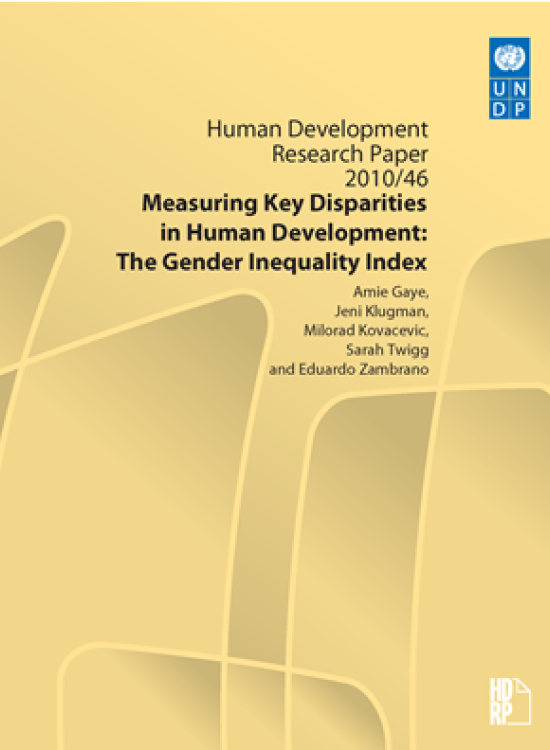Measuring Key Disparities in Human Development
The Gender Inequality Index

UNDP (United Nations Development Programme). 2010. Measuring Key Disparities in Human Development: The Gender Inequality Index. New York.
Measuring Key Disparities in Human Development
The Gender Inequality Index
Gender inequality remains a major barrier to human development. Girls and women have made major strides since 1990, but they have not yet gained gender equity. In this paper, we review ways to measure and monitor gender inequality, providing a critique of existing measures including the first global gender indices that were launched in the 1995 Human Development Report – the Gender-related Development Index and the Gender Empowerment Measure - and introduce a new index that is presented in the 2010 Human Development Report. The Gender Inequality Index, which addresses the key criticisms of previous measures, is unique in including critical issues of educational attainment, economic and political participation, and reproductive health issues and in accounting for overlapping inequalities at the national level. As such, it represents an important advance on existing global measures of gender equity. Measures of the disadvantages for women raise awareness of problems, permit monitoring of progress towards gender equity objectives and help keep governments accountable. In this light, the Gender Inequality Index is designed to reveal the extent to which the realization of a country’s human development potential is curtailed by gender inequality, and provides empirical foundations for policy analysis and advocacy efforts. We also compare our results with the results of alternative gender inequality indices, finding significant variation in rankings across the various indices due largely to differences in the elements of gender inequality they seek to measure.